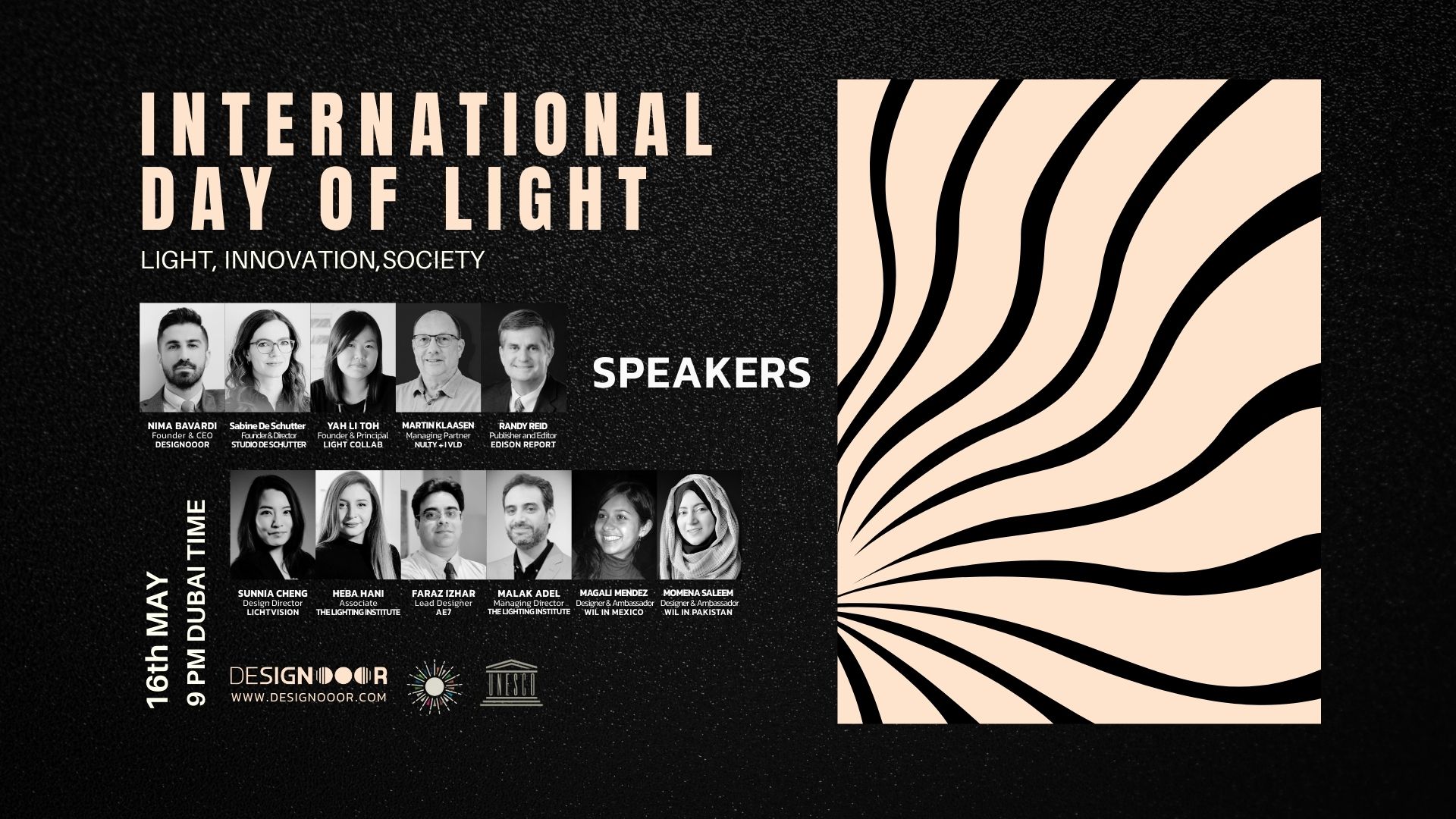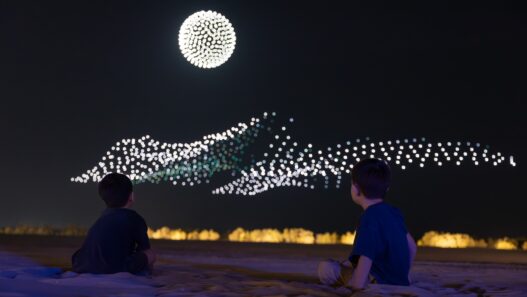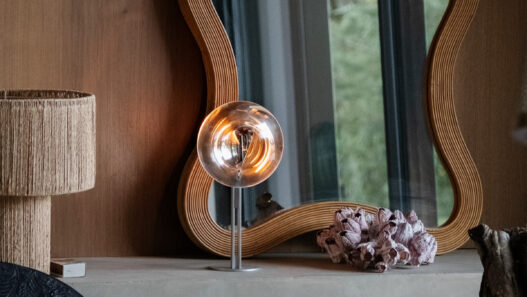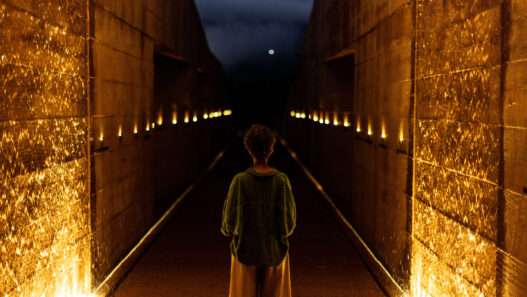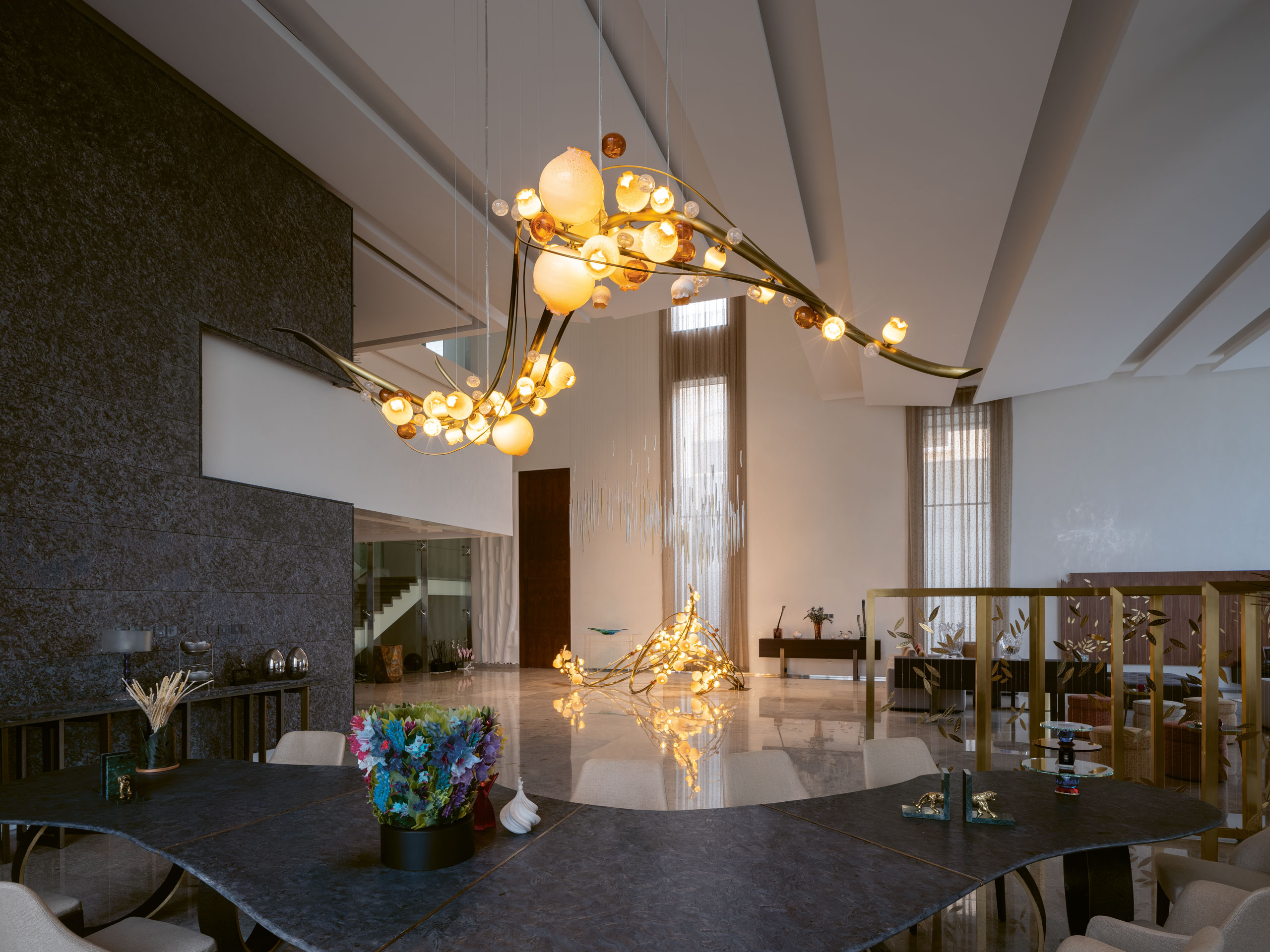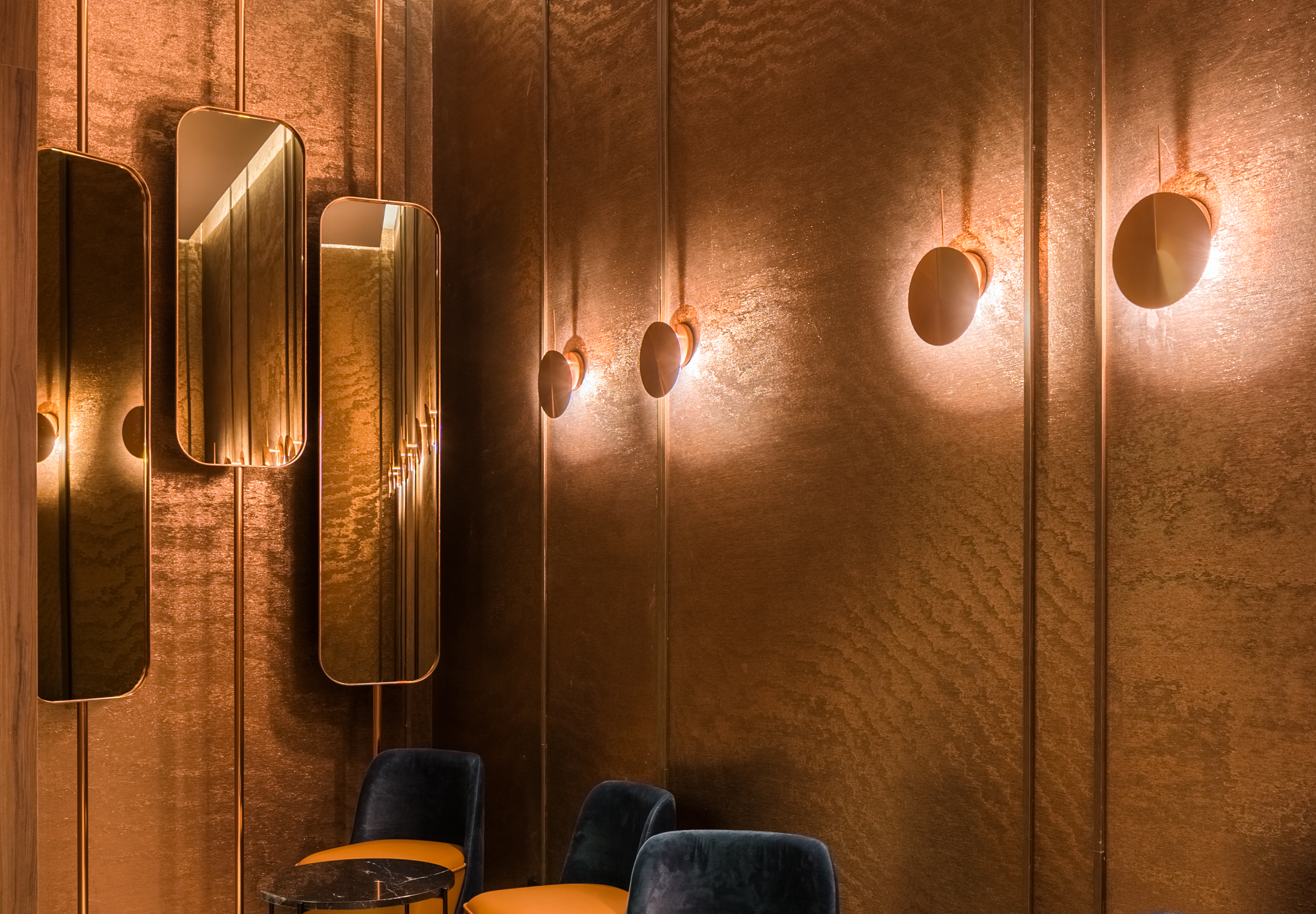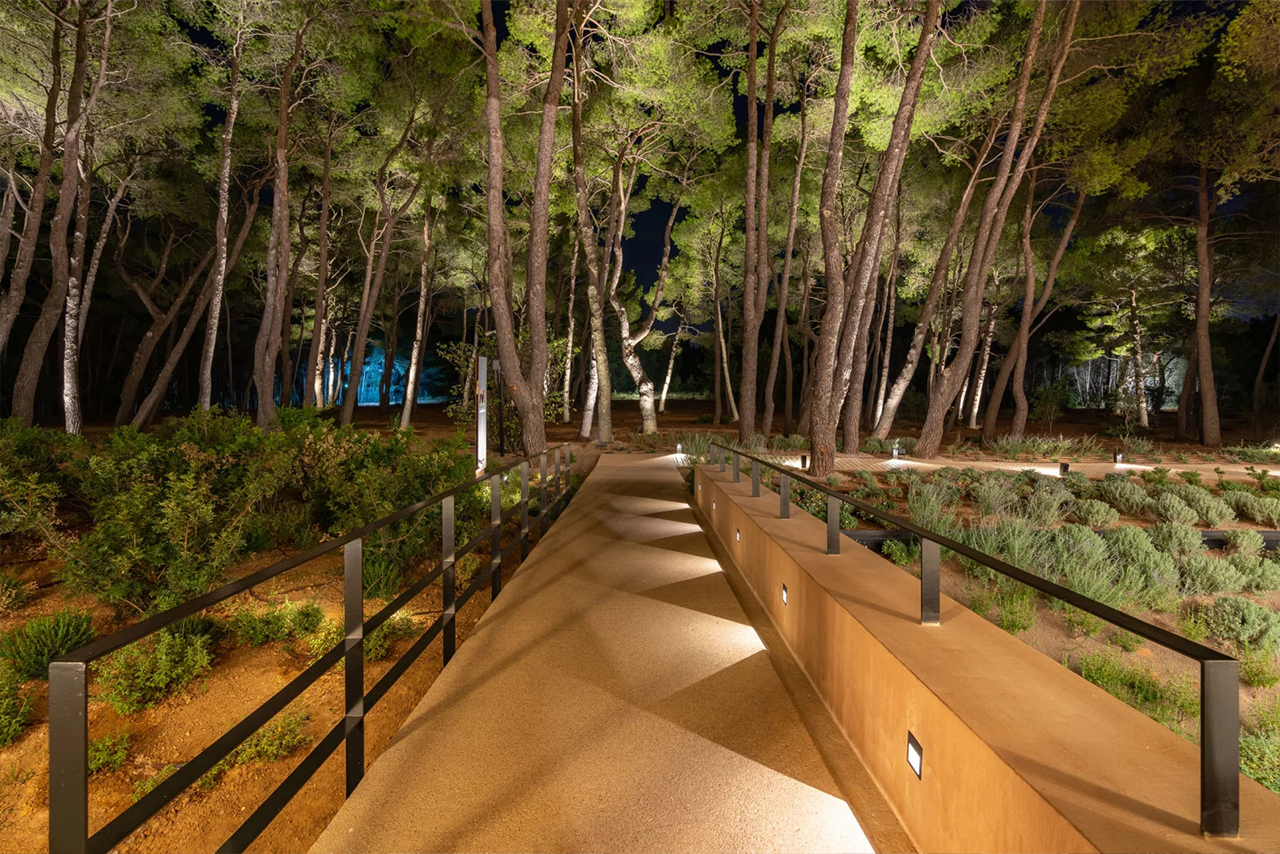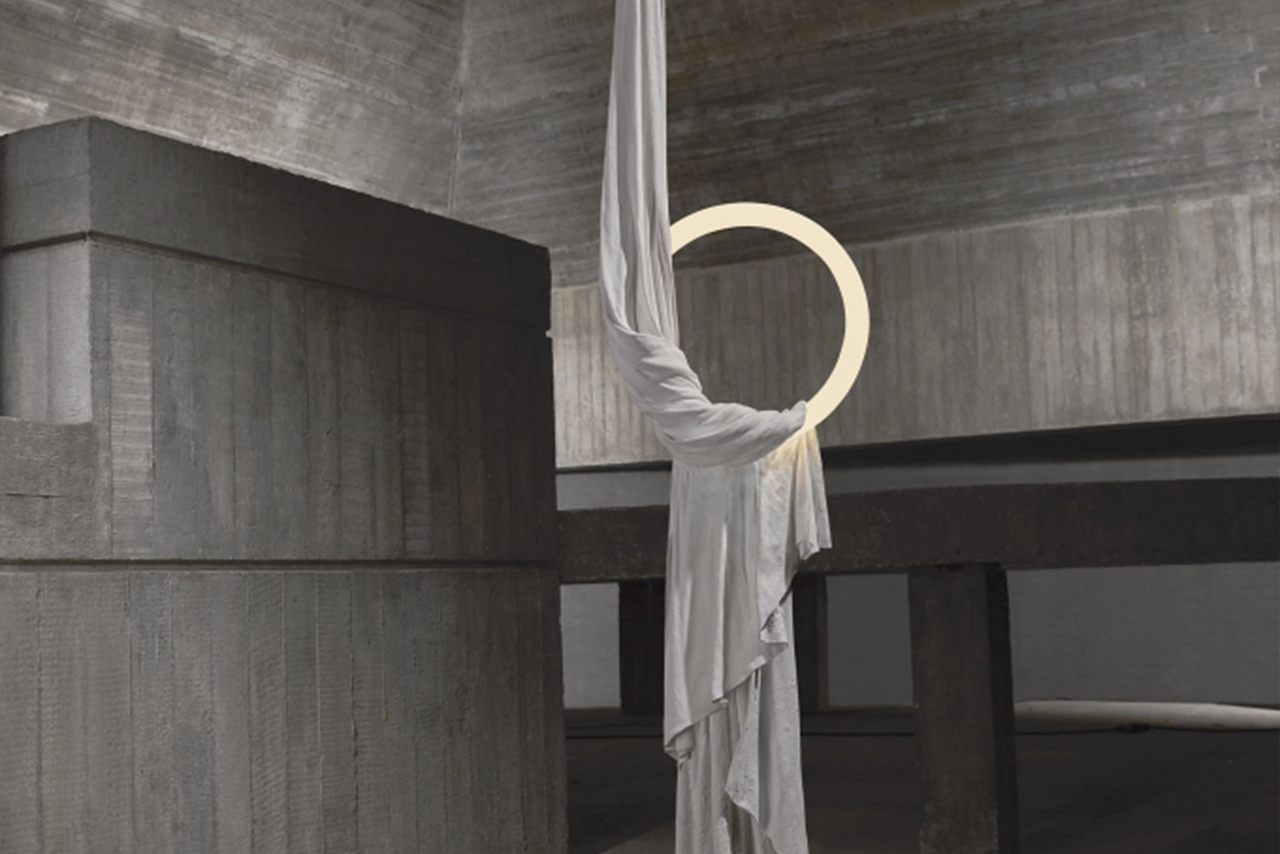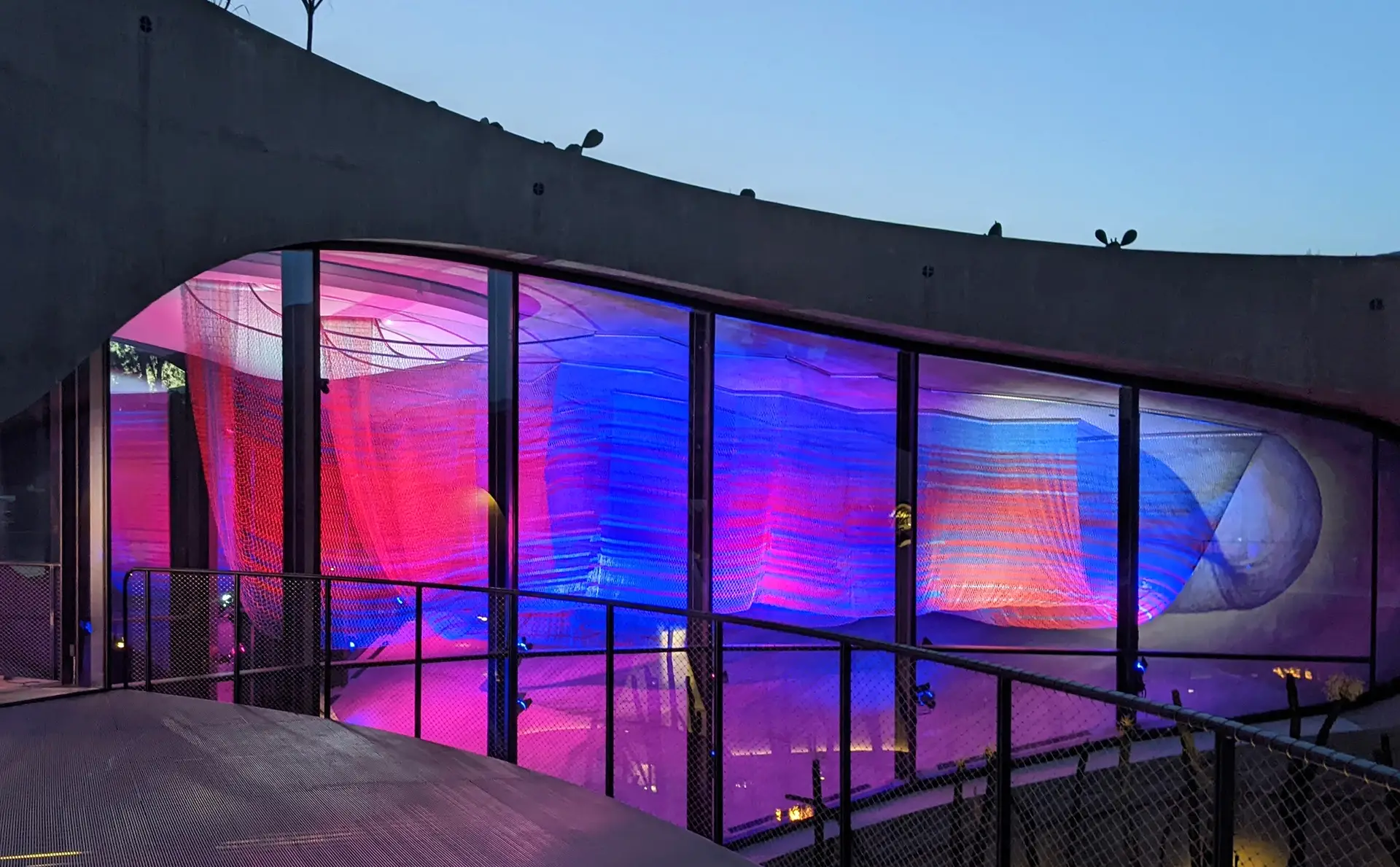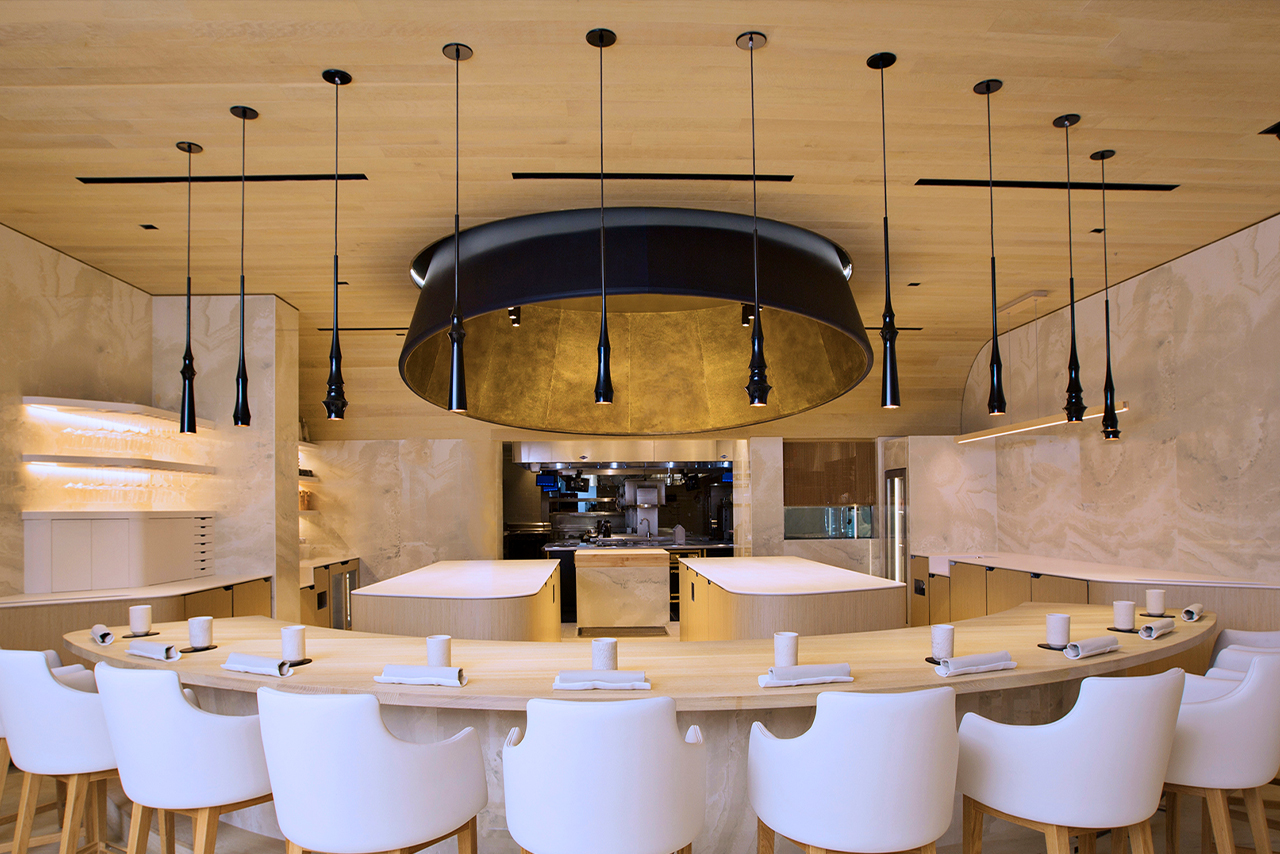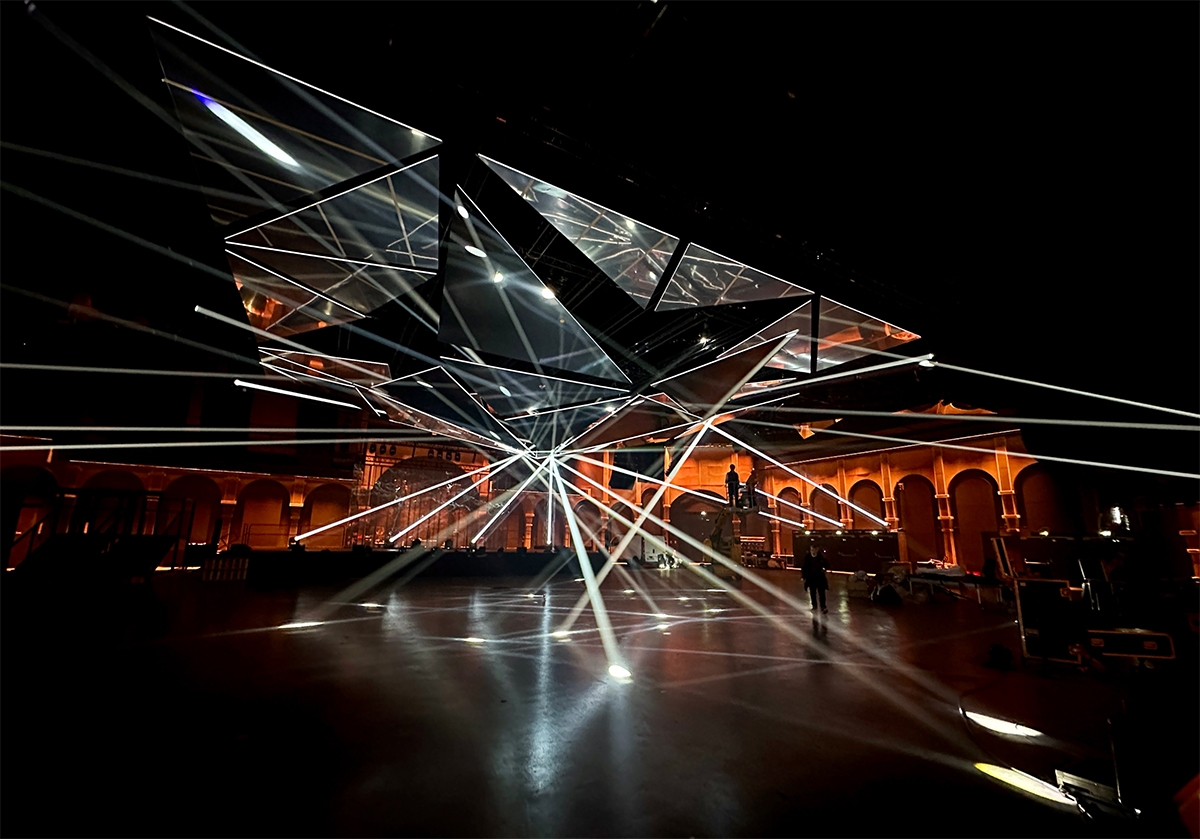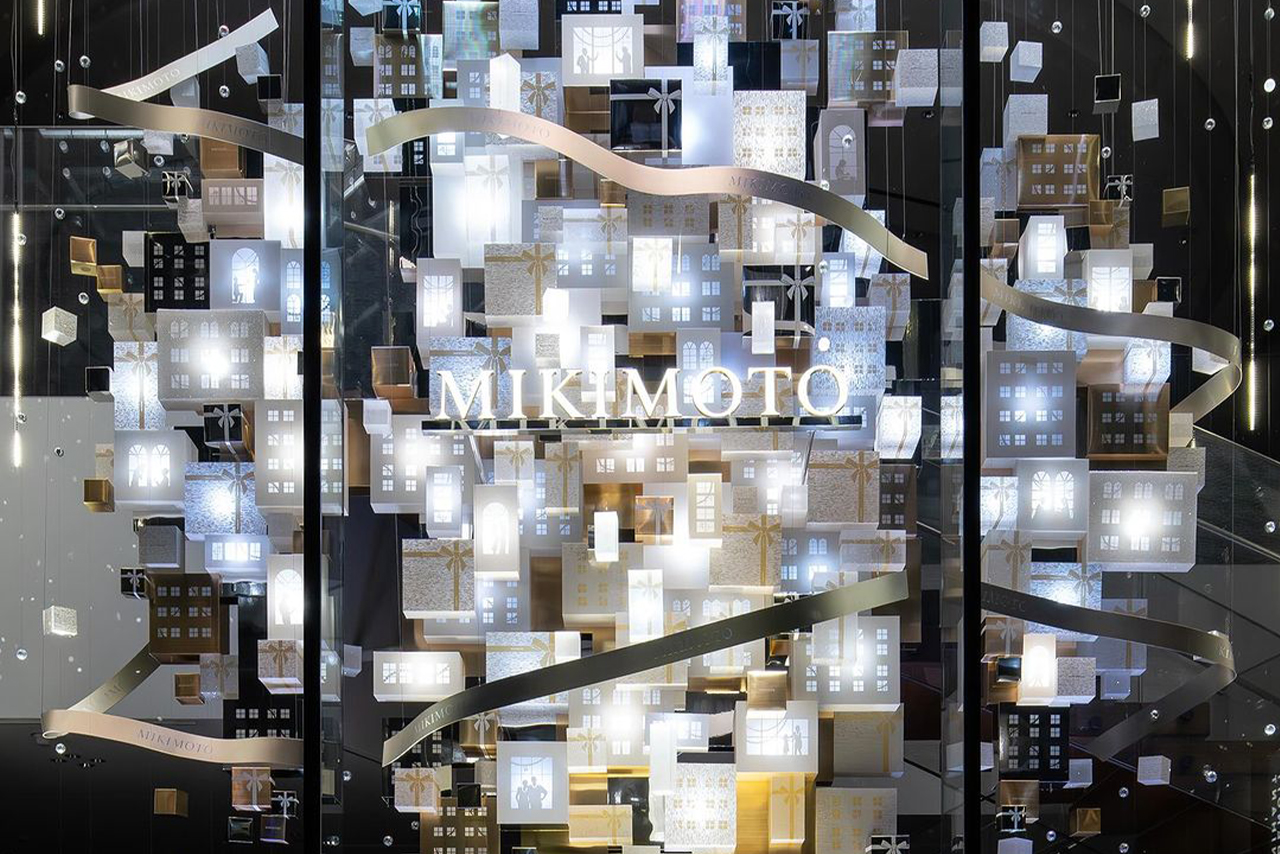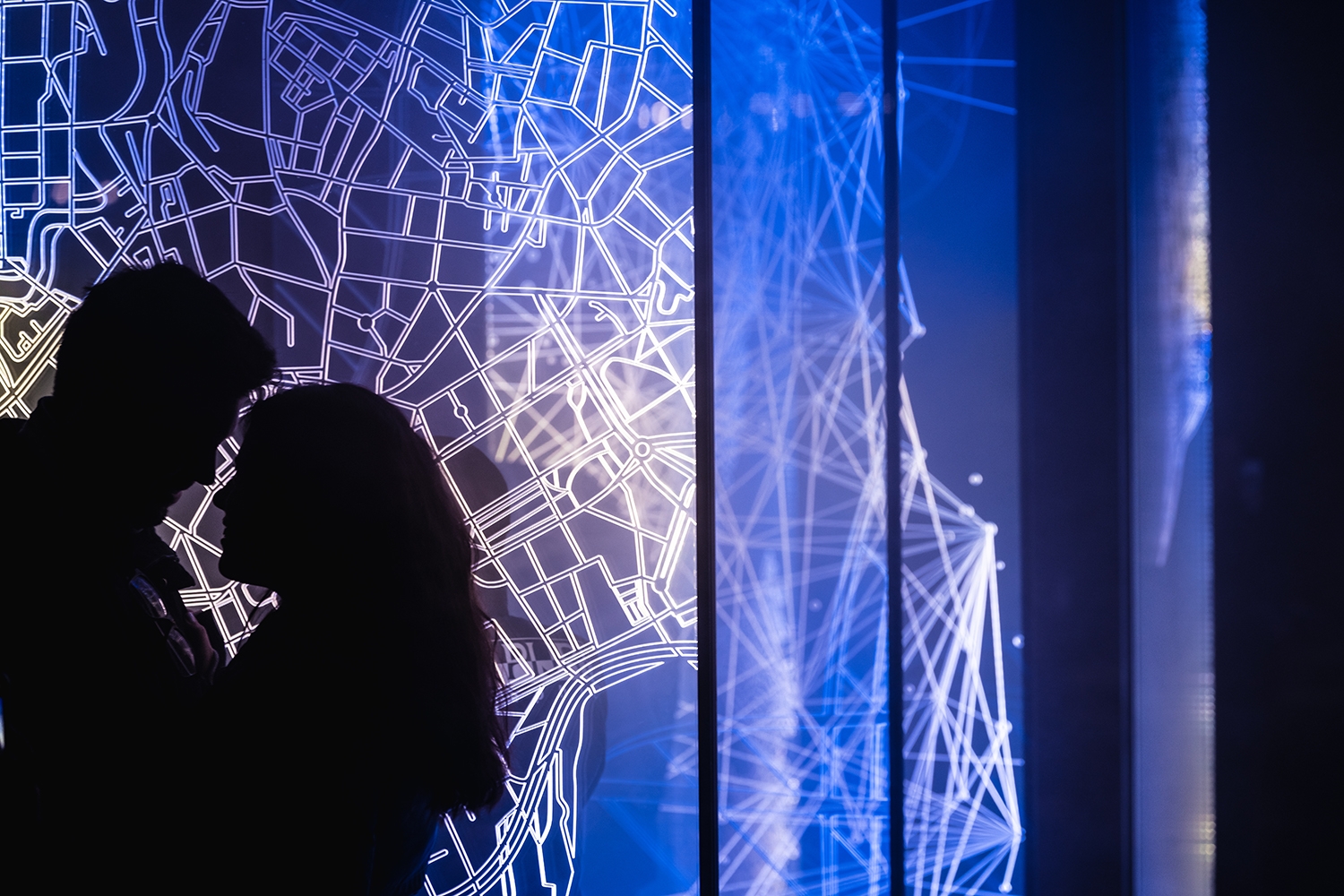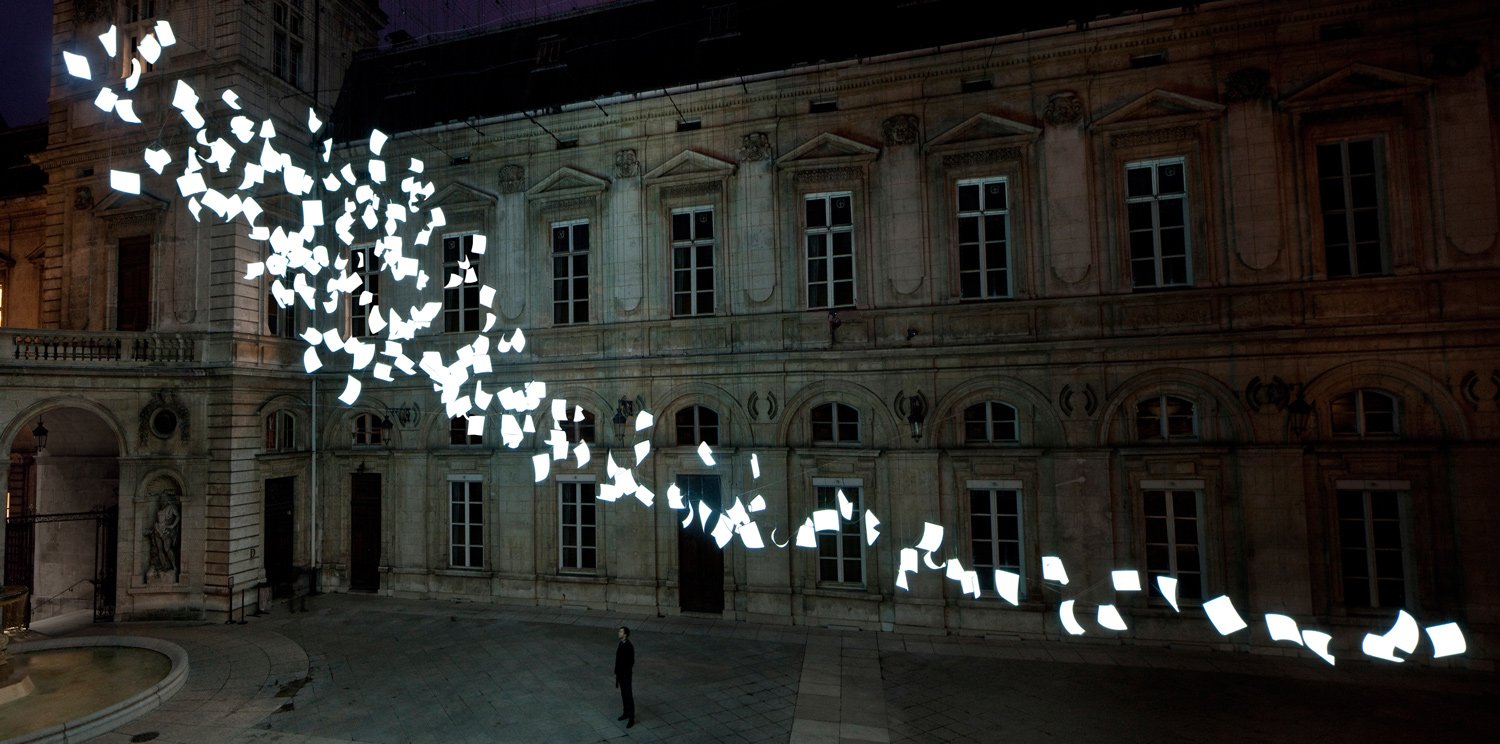This lighting design initially draws upon a symbolic and organic expression, with the primary inspiration coming from the desert nature of a region like Kuwait. The numerous glass elements and curved metal branches, expertly integrated with light, depict a sense of natural growth and blooming. From an aesthetic perspective, the contrast between transparent and opaque glass, combined with amber-toned lighting, evokes the interplay of natural light with organic materials, reflecting the raw beauty of the desert. This design is not only visually striking but also enhances the spatial dynamics through its intricate balance between form and function. The internal illumination of the glass fruits creates a captivating interplay of shadows and light, reflecting the tension between survival and renewal in nature.
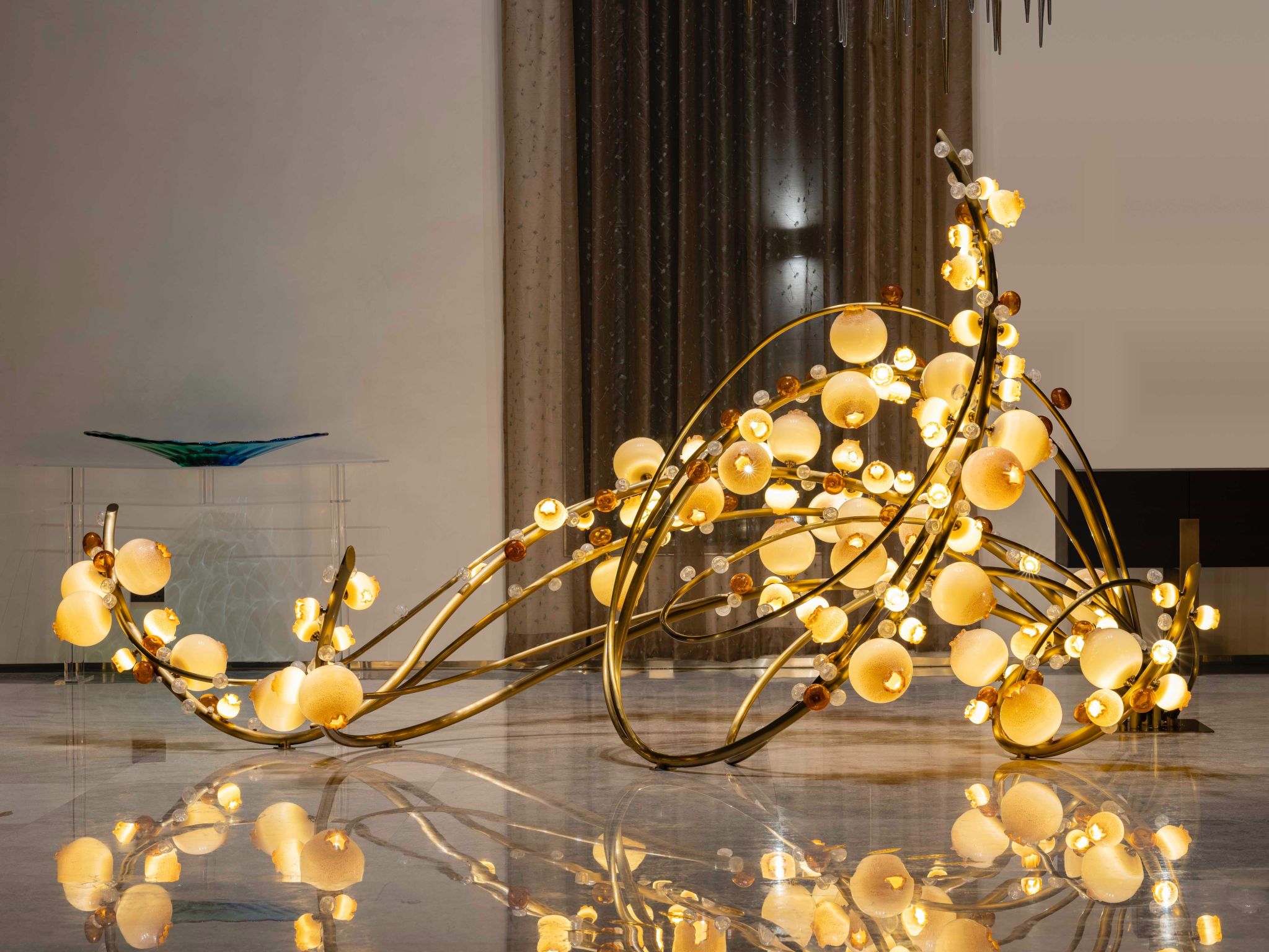
Functionally, this lighting design transcends traditional hanging fixtures and becomes a volumetric element, occupying both floor and ceiling space. This is a revolutionary departure from the conventional concept of chandeliers. While in typical spaces, lighting fixtures are often suspended solely for illumination, this piece interacts with the ground, appearing as a tree of light that not only provides illumination but tells a story of nature’s confrontation with arid environments. The metal branches rising from the ground symbolize a tree growing toward the light, representing both a bearer of light and a metaphor for survival in harsh conditions. Such a design becomes part of the architecture itself, engaging with its surroundings.
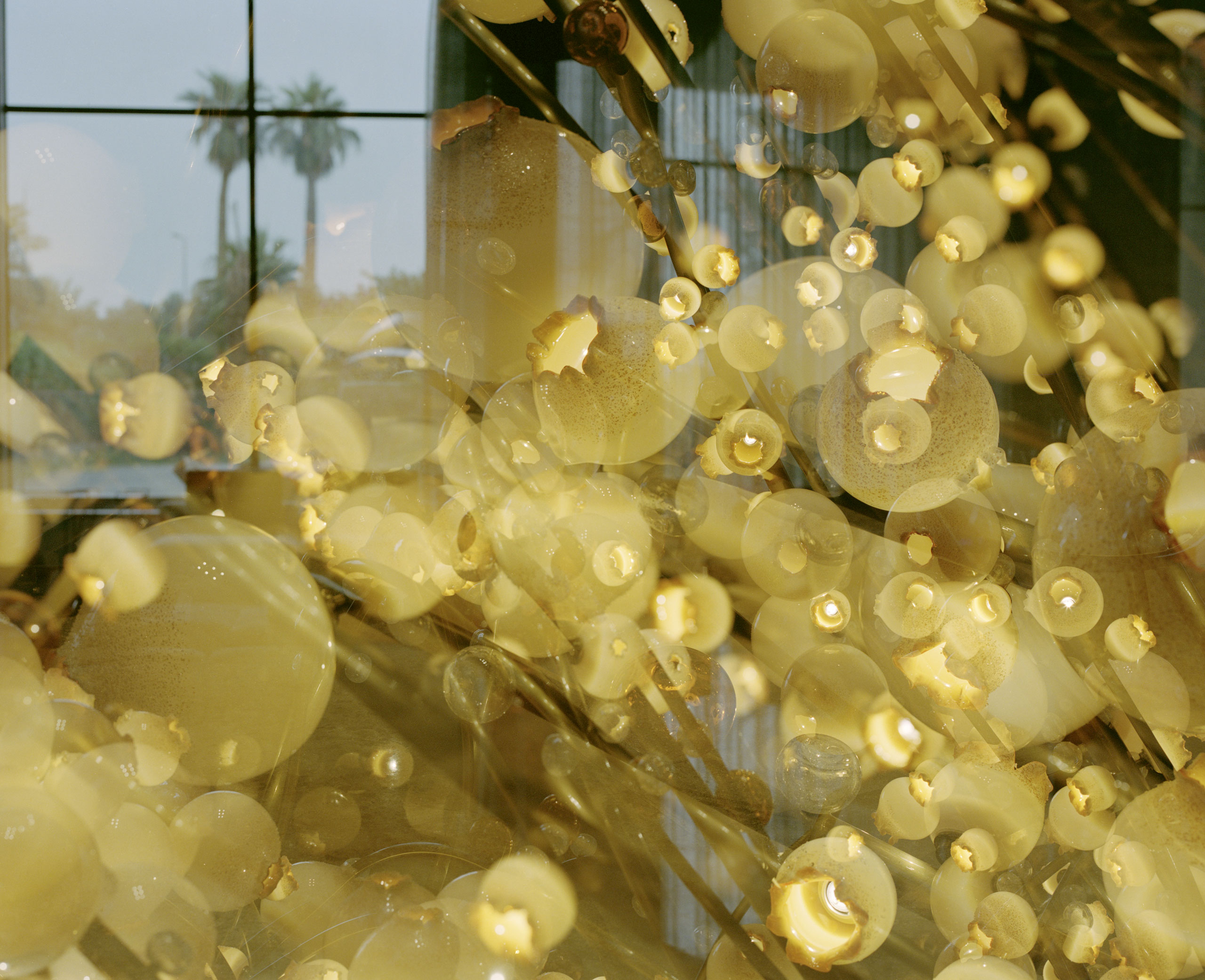
From a Gestalt perspective, the flowing, organic lines in this lighting exhibit deep harmony with natural formation theories and visual symbols in Islamic art. The design is clearly inspired by the fluidity of Arabic calligraphy, which is rooted in Kuwaiti culture. The soft curves of the branches resemble the calligraphic forms and abstract symbols commonly seen in Islamic art but are reimagined in a modern, industrial material. In the art world, this piece can be likened to modern movements such as Art Nouveau or even Surrealist works, where nature is abstractly and surrealistically recreated with meticulous attention to detail. At the same time, the connection between this lighting and the desert environment brings to mind the works of artists who integrate living forms into their art, like Antony Gormley’s sculptures that intertwine with natural spaces and human existence.
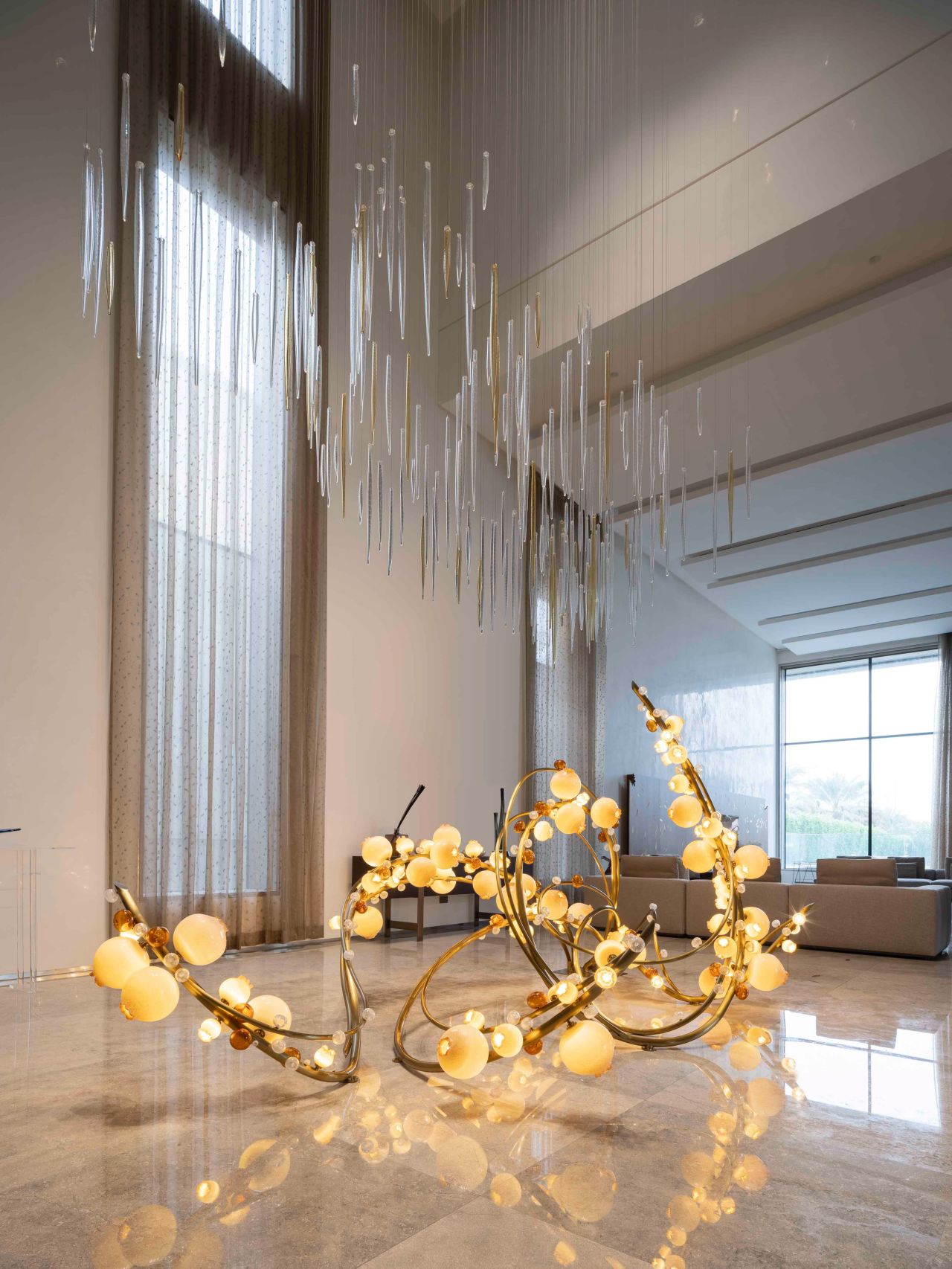
Ultimately, this lighting sculpture is deeply connected to the native culture of Kuwait and its desert landscape. It not only creates a visual impact but also represents a symbolic moment of life and hope in the midst of a harsh desert.
Brand : Lasvit
Designer : Stefan Mihailovic
Photo credits : Mojmír Bureš
